Review
Research Article
Case Report
Aim & Scope
The Journal of Social and Cultural Research, which generally includes multi-disciplinary academic studies, is open to all kinds of national and international contributions. The journal publishes articles in Turkish and English; in addition to articles, reviews and introductory articles are also included.
Journal of Social and Cultural Research is a peer-reviewed journal that follows a double blind peer review process.
Within the scope of the journal; academic studies of all disciplines within the scope of social sciences, especially field studies, cultural studies, family studies, social problem research, women's studies, social work, sociology are included. Although the article processing time varies depending on the intensity, it takes an average of 90 days. The similarity rate in the studies to be published should be maximum 20%.
Author Guidelines
Guidelines for authors;
Please read the general policy of the journal about the spelling rules and publishing principles before submitting your article.
In order for the articles sent for evaluation to be accepted, it is required that they have not been published before. Submitted articles are first reviewed by the editorial board. If the content and format of the articles submitted to the journal are not deemed appropriate, the articles can be rejected by the editorial board.
Since the blind referee is used, only the author information and, if any, notes about the article (thanks, project support information, etc.) should be included on the first page of the article file; the article text should start from the second page of the file.
The study must comply with grammar rules. The use of punctuation marks in the article should be based on the latest Spelling Guide in the writing of words and abbreviations, a clear and simple way of expression should be followed, and unnecessary information that goes beyond the purpose and scope should not be included. In the preparation of the article, valid scientific methods should be followed, the subject, purpose, scope, reason for preparation etc. of the study should be given in a specific order.
Articles to be sent to our journal should be submitted with the user account opened through DergiPark. Research articles and reviews of scientific books are published in Turkish and English.
Generally, studies submitted should be in the following format:
Articles should have an introduction at the beginning and a conclusion at the end. Articles should not exceed 15 pages and 8000 thousand words, including all tables, figures, references (bibliography) and appendices. Articles should be written in MS Word with normal margins, 12-point Times New Roman font and 1.5 line spacing, left aligned. The text should be written in 12 pt. 6 nk paragraphs and single line spacing. Tables, figures, pictures and charts should be in size appropriate for the journal's page. If necessary, they can be written in smaller fonts and single line spacing. Tables and tables should be numbered consecutively in accordance with their appearance in your article. Footnotes of the tables should be placed just below the table body and indicated with descriptive letters in lowercase letters. Using vertical rulers should be avoided. As few tables as possible should be used and care should be taken that the data presented in the tables do not match the results already stated elsewhere in the article.
Title Rules
The title of the article should be in 14 point bold Cambria font, and the subtitles should be in Times New Roman font, 12 point bold. Titles should be formatted so that the word initials are capital letters and other letters are lowercase. Each article should have a title in Turkish and English in the language in which it is written. It should be short, clear and sufficient to reflect the content of the article, and should not exceed fifteen words.
Summary and Keywords
The Turkish abstract should reflect the purpose, scope and results of the study. The abstract should be at least a hundred and a maximum of two hundred words, and Turkish keywords of at least three and at most eight words should be written under one line. In addition, the abstract, title and keywords should be in English. Articles written in a foreign language should include the title, abstract and keywords in Turkish, English and written language. Care should be taken to avoid language mistakes in abstracts in a foreign language. TAB space should not be used in the Summary and Abstract sections.
Main Text
It is preferred that the articles are written using MS Office Word software program (extension .doc or .docx) with a maximum of thirty-five pages.
Page layout
A4 size, Times New Roman 12 pt. Margins right, left, top and bottom 2.5 cm Line spacing 1.5 Page number should be given at the bottom of the page, centered. Except for the summary section, TAB space should be given at the beginning of each line.
In the first paragraph after the title, no carriage return should be made, other paragraphs should not be formatted with a carriage return. The copy sent to the journal should not contain any information about the author.
The format used for referencing is APA (American Psychological Association) Style 6th Edition. In both the citations and the bibliography part, the authors should follow the spelling rules and format specified in the American Psychological Association Publication Guide published by the American Psychological Association.
Content Layouts and Basic Features According to Article Types
Original Research: It should consist of "Abstract", "Keywords", 'Introduction', 'Method', 'Results' and 'Conclusion / Discussion' sections respectively. The results of the study can be expressed in the last paragraph of the discussion section, there is no need to open an additional title. : It is within the scope of the research article. It is created by systematically and comprehensively scanning the studies published in the relevant field, determining which studies will be included in the review within the framework of various objective acceptance and rejection criteria, and synthesizing the information on the relevant subject. Systematic review studies should consist of "Abstract", "Keywords", "Introduction", "Subtitles" and "Resources" sections.
Metanalysis: Meta-analysis is research articles written in order to provide the highest level of evidence about the accuracy and authenticity of the attempts. It is a type of statistical literature developed to show the effect of a particular situation with a single estimator by combining the findings of at least two independent studies on a specific subject. The degree of validity and reliability of the results obtained by combining the findings of more than one study will be strengthened. While single studies with small samples may not be statistically significant, articles combined with meta-analysis help to overcome this problem. Meta-analysis can be done for both experimental and quantitative research. Meta-analysis articles; It consists of "Self", "Keywords", "Introduction", "Method", "Results", "Conclusion / Discussion" and "Resources" sections.
Book Reviews: Book Reviews is an article in which the contents of the books published in the last 5 years are evaluated and introduced. The total length of the article should not exceed 2500-5000 words. Additional information (drawings, charts, movie data sets) can be published at the discretion of the editor and referees (50 Mb of additional data per article). It should consist of 'Introduction', 'Subtitles' sections respectively.
Invited Review: Invited Review Articles are articles written by experts who have rich experience and cited studies in the field. Describing, evaluating and discussing existing information on a topic within the scope of the journal; The journal sends an invitation to the authors it determines to write review articles that guide future studies. The authors of the review article must be a scientific authority on the subject of the manuscript, document their publications on their respective studies in the field in the "Cover Letter" (authors must have at least one SCI / SCI-expanded indexed publication on the subject of the review) The articles of the review authors will be returned to the authors who do not list the relevant publications in the cover letter. It should be a maximum of 20 pages and an upper limit of 6000 words (excluding abstract and sources). Reviews differ from the standard typeface. The universal format of manuscript writing (that the abstract is structured in a certain format, as in the research article) is not applied in review articles. Review articles consist of "Abstract", "Keywords", "Introduction", "Discussion" and "Conclusion" sections. Outline the "Introduction" section becomes broader and explains the purpose of the review and the rationale for the article. There is no "Method" and "Results" section. The discussion part will again be extended and studies on the same subject and their synthesis will be made in line with personal experiences. The conclusion part is the subtitle of the "Discussion" part and is a comment and evaluation paragraph on the subject. The author (s) who submit a review article should include a section in the article that defines the methods they use for the selection, acquisition, and synthesis of the data they use in the article. These methods should also be specified in the Abstract section. References will be more than all articles. However, the author's own works will also be found.
Case Reports: It should not exceed 10 pages (excluding references). Case reports should include introduction, case report and discussion sections, respectively.
Letter to the Editor: It should not exceed 5 pages (excluding abstract and sources). It may not contain abstract. It should not contain more than four authors. It may contain at most one graph or chart. If it is written as a response to an article, it should be specified by giving a number and date, and the name, institution and address of the author should be at the end of the text.
Interview: It should not exceed 5 pages (excluding abstract and sources). It may not contain abstract. It should not contain more than four authors.
Quotes and References
References are basically done in two ways:
While the United States carried out military operations abroad only six times from 1975 to the fall of the Berlin Wall in November 1989, nine major military operations were carried out from 1989 to 2004 and the number of soldiers sent reached hundreds of thousands (Gray, 2005: 14. ).
or
According to Feroz Ahmad (2012: 101), one of the most important goals of the revolution by letters, it was to accelerate the process of new literacy and education in Turkey.
When referring to the work with two authors:
The Trans Pacific Treaty is one of the largest treaties on a global scale in recent years (Green and Goodman, 2015: 45).
or
According to Green and Goodman (2015: 45), the Trans Pacific Treaty is one of the largest treaties on a global scale in recent years.
Instead of using the first author's surname after the first author's surname to refer to works with three or more authors, 'et al.' expression is used.
Climate has a determining feature on human character. (Walter et al., 1998: 25)
or
According to Walter et al. (1998: 25), climate has a determining feature on human character.
When referring to works with legal authors: If a group / legal person (such as associations, companies, government agencies and other working groups) is expressed as the author, the name information of this group should be given in a very clear and understandable way in the text. The group name may be shortened in some cases. If the group name is long, if the abbreviation is clear to everyone, or if there is an already known abbreviation for the name, both the open form and the abbreviation can be used in the first use, and only the abbreviation can be used in the next use. If the group name is short or the abbreviation is not clear to everyone, all references should be written in its clear form.
If the reference is at the end of the sentence;
First reference
(Scientific and Technological Research Council of Turkey [TÜBİTAK], 2013)
Second and subsequent references
(TÜBİTAK, 2013)
If the submission is made in a sentence
First reference
The Scientific and Technological Research Council of Turkey (TUBITAK, 2013)
Second and subsequent references
TÜBİTAK (2013)
Multiple references in the same parenthesis: Multiple references in the same parenthesis should be in alphabetical order according to the first author's surname and should be separated with a semicolon. Example: (Akbulut and Doğan, 2013; Şencan, 2003; Tonta, 2010)
Bibliography
At the end of the text, it should be arranged alphabetically according to the authors' surname. The surname of the author of the source used should be indicated first. Example: İsen, M. (2010). From Tezkir to biography. Istanbul: Kapı Publications. Köprülü, Mehmet F. (1961). Evolution of Azerbaijani literature. Istanbul: MEB Publications.
➢ If the source has two authors, it is first started with the surname of the author whose name was written before in the study; Putting the surnames of the next authors before the first author in alphabetical ordering of the imprint information has no function. Example: Taner, R. and Asım B. (1981). Selected stories from the literature. Reference books. Istanbul: Gozlem Publications.
➢ If the source has more than three authors, the first's surname and name should be written, then et al. or and others abbreviation should be used; Example: Akyüz, K. et al. (1958). Fuzulî's Turkish dîvân. Ankara: İş Bank Publications.
Book and journal names should be written in italics; Resources such as article, book section should be indicated in quotation marks. While the page number information is not required in the book tag; In short works such as journals, encyclopedia articles, and book chapters, the page range information of the used chapter must be included. Example: Berk, İ. (1997). Poetics. Istanbul: Yapı Kredi Publications. Demir, N. (2012). "Evidensiyel in Turkish". bilig, Journal of Turkish World Social Sciences 62, 97-117.
If there is anyone who translates, compiles, prepares or editors the book, its name should be given after the author and work information. Example: Shaw, S. (1982). Ottoman Empire. Mehmet Harmancı (Trans.). Istanbul: Sermet Printing House.
References should be shown as (a, b) if an author has more than one publication with the same date. Example: Develi, H. (2002a). Sound Simulation and Harmony in 17th Century Ottoman Turkish According to Evliya Çelebi's Travelogue. Ankara: TDK Publications. Develi, H. (2002b). XVIII. Risâle-i Garîbe on the 21st Century Istanbul Life. Istanbul: Bookstore.
In encyclopedia articles, if the author's surname and name are known, the date of the article, the title of the article in quotation marks, the full name of the encyclopedia, the place of publication, the publisher, and the page range should be indicated respectively: Example: İpekten, H. (1991). “Azmî-zâde Mustafa Hâletî”. Encyclopedia of Islam. C. 4. Istanbul: Turkey Religious Foundation Publications. 348-349.
➢ While citing the theses, the surname and name of the thesis author should be written after the thesis author's surname, the full title of the thesis with italic character, the thesis type, the city where the thesis was prepared, and the name of the university: Example: Karakaya, B. (2012). Yîsuf u Züleyhâ of Garîbî: Review-criticized text-index. Master Thesis. Kırşehir: Ahi Evran University. Manuscripts, Author. Title of the Work. Library. Collection. Catalog number. leaf. should be cited as: Example: Âsim. Zeyl-i Zübdetü'l-Eş‘âr. Nation Library. A. Emirî Efendi. No.1326. vr. 45a.
Author's surname, Author's name to refer to a work on the Internet. "Title of the message". Internet address. It is sufficient to provide (Access Date) information. Example: Central Bank of the Republic of Turkey. "Livelihood index (wage earners)" Electronic Data Distribution System. http://evds.tcmb.gov.tr/ (Date of Access: 04.02.2009).
➢ Article citations that have not been published yet but have been accepted for publication can also be shown as follows. Example: Atılım, M. and Ekin T. (2008). ”Forecasting oil price movements with crack spread futures”. Energy Economics. In press (doi: 10.1016 / j.eneco.2008.07.008).
Ethical Principles and Publication Policy
SKAD expects all stakeholders to carry the following ethical responsibilities within the scope of publication ethics.
The following ethical duties and responsibilities have been prepared in open access, taking into account the guidelines and policies published by the Committee on Publication Ethics (COPE).
Publishing an article in a peer-reviewed journal is an essential building block in the development of a harmonious and respected knowledge network. Peer-reviewed articles support and shape the scientific method. It is therefore important for all parties involved in publishing, authors, journal editors, reviewers and publishing organizations, to agree on standards of expected ethical behavior.
Ethical Principles
1. Authorship of the paper:
Authorship should be restricted to individuals who made significant contributions to the design, conduct or interpretation of the reported work. All those who made significant contributions should be listed as co-authors. If there are others who have participated in certain important aspects of the research project, they should be acknowledged or listed as contributors. The corresponding author should ensure that all appropriate co-authors are included and that there are no ineligible co-authors, and that all co-authors have seen and approved the final version of the manuscript and agree to its submission for publication.
2. Conflicts of Interest:
Authors: All authors must disclose in their manuscript any financial or other significant conflicts of interest that could be construed to influence the conclusions or interpretation of their manuscript. All sources of financial support for the project should be disclosed.
Reviewers: Reviewers should inform the journal editorial office about the review process if they suspect any conflict of interest in the manuscript they are reviewing and, if necessary, refuse to review the manuscript. In order to prevent conflict of interest, people from the institutions where the authors of the article work cannot serve as referees for the article.
Editors: Editors should have no personal or financial conflict of interest with the manuscript.
3. Data Access and Storage:
Authors are asked to provide raw data in connection with an article for editorial review and, where possible, should be prepared to provide public access to such data and, in any event, should be prepared to retain such data for a reasonable period after publication.
4. Fabricated Data Production and Forgery:
Fabricated and/or falsified experimental results, including images.
5. Duplicate / Multiple Article Submissions:
Articles found to have been submitted elsewhere or published elsewhere. If authors have used their own previously submitted or published work as the basis for a submitted paper, they must cite the previous work. They should also indicate how new contributions in addition to previous work are presented in their submitted manuscripts.
6. Intellectual Property Rights
- Authors confirm that the submitted manuscript (and any supporting material) is their intellectual property and that copyright has not been transferred to others.
- Authors confirm that the manuscript is free of plagiarism, fabrication, falsification, manipulated citations, and that the manuscript complies with JSS authorship policies.
- All manuscripts, revisions, drafts and typescripts remain the intellectual property of the author(s). Except as provided in the agreed license, the author(s) retains copyright to their work.
- All review comments and reports remain the intellectual property of the reviewer or editor. Except as specified in the agreed license, the author(s) retain copyright in their work.
- Authors, reviewers and editors agree to keep confidential all communications, comments or reports from reviewers or editors.
- Reviewers and editors agree to keep confidential all manuscripts, revisions, and drafts except the final published typescript(s).
7. Correction, Retraction, Expression of Concern
- Editors may make corrections if they find minor errors in the published article that do not affect the findings, interpretations and conclusions.
- Editors may retract the manuscript if there are major errors/omissions that invalidate the findings and conclusions.
- Editors may issue a statement of concern if there is a possibility of research or publication misconduct by the authors; if there is evidence that the findings are unreliable and that the authors' institutions have not investigated the case; or if the possible investigation seems unfair or inconclusive. COPE and ICJME guidelines for correction, retraction or expression of concern are followed.
8. Publication of Studies Based on Surveys and Interviews
SKAD adopts the "Code of Conduct and Best Practice Guidelines for Journal Editors" and "Code of Conduct for Journal Publishers" principles of the Committee on Publication Ethics (COPE) in order to provide ethical assurance in scientific periodical publishing. In this context, the following points should be followed in the studies submitted to the journal:
- Ethics committee approval must be obtained for research in all disciplines that require ethics committee approval, and this approval must be stated and documented in the article.
- In studies that require ethics committee approval, information about the approval (name of the committee, date and number) can be included in the method section. However, in case presentations in the article information form at the end of the article, information on the signature of the informed consent form should be included in the article.
Research requiring Ethics Committee approval is as follows:
- All kinds of research conducted with qualitative or quantitative approaches that require data collection from participants using survey, interview, focus group study, observation, experiment, interview techniques,
- Use of humans and animals (including materials/data) for experimental or other scientific purposes,
-Clinical trials in humans,
-Research on animals,
-Retrospective studies in accordance with the law on the protection of personal data,
Also;
- Stating that the "informed consent form" has been obtained in case presentations,
- Obtaining and indicating permission from the owners for the use of scales, questionnaires, photographs belonging to others,
- Stating that copyright regulations are complied with for the intellectual and artistic works used.
9. Policy on Publishing Supplementary or Special Issues
A special issue can be published once a year upon the request of the Editorial Board. All processes for articles submitted for inclusion in the special issue are the same as the standard article process.
- Supplement or Special Issue: These are issues published in addition to the regular issues of a journal published at regular intervals. It consists of congress/symposium etc. event proceedings or articles on a specific topic.
- The page numbers in Supplementary or Special issues are numbered differently from the regular issues during the year.
- The number of Supplementary or Special issues cannot be more than 1/3 of the regular period. Special issues containing abstracts of congress proceedings are not included in this scope.
- Rates of case reports, review and research articles (excluding congress abstracts) published in Supplementary or Special issues will be included in the rates of articles published in other issues.
- Gift issues are not accepted as special or supplementary issues. They are numbered and uploaded as regular issues.
10. Plagiarism Action Plan and Measures of the Journal
The journal respects intellectual property and aims to protect and promote the original work of its authors. Plagiarized articles are contrary to the standards of quality, research and innovation. Therefore, all authors submitting manuscripts to the journal are expected to adhere to ethical standards and avoid all forms of plagiarism. If a submitted or published manuscript is suspected of plagiarism, the Editorial Board of the journal will first review the manuscript. The Editorial Board will then review the manuscript. The Journal will then contact the author(s) to send clarifications within 15 days. If the journal does not receive any response from the author within the specified period, the journal contacts the author's affiliated university and requests an investigation of the allegation.
The Journal will take the following serious measures against published manuscripts found to contain plagiarism:
- The journal will immediately contact the university to which the author(s) is affiliated to take definitive action against the author(s) concerned.
- The journal will remove the PDF copy of the published article from its website, remove the issue from its full file, and disable all links to the published article. The phrase Plagiarized Article will be added to the title of the published article.
- The journal will deactivate the author's account and reject all future submissions from the author for 2 years.
Note: When readers notice an error or inaccuracy in a published article, they can make a complaint by sending an e-mail to kockaya@sakarya.edu.tr.
In new manuscripts submitted to the journal, the author must submit a similarity report. Pre-checked articles can be subjected to plagiarism scanning again using any software.
Authors will be informed if plagiarism/self-plagiarism is detected. If an article with high similarity rates (maximum 20%) or more than 3% similarity rate from a single source is detected, it may be rejected or resubmitted to the author to reduce the similarity rate.
Actions against scientific research and publication ethics are as follows:
(YÖK Scientific Research and Publication Ethics Directive, Article 4)
Plagiarism: Representing the original ideas, methods, data or works of others as one's own work in whole or in part without citation in accordance with scientific rules,
Forgery: Using non-existent or falsified data in scientific research,
Distortion: Falsifying research records or data, falsifying devices or materials that were not used in the research, falsifying or shaping the results of the research in line with the interests of the persons and organizations receiving support,
Republishing: Presenting duplicate publications as separate publications for academic appointments and promotions,
Slicing: Inappropriately and inappropriately dividing the results of a research into parts in a way that disrupts the integrity of the research and publishing them in more than one issue and presenting these publications as separate publications in academic appointments and promotions,
Unfair authorship: Including or excluding people who have not actively contributed, changing the order of authors in an unjustified and inappropriate manner, removing the names of active contributors from the work in subsequent editions, using one's influence to have one's name included among the authors even though one has not actively contributed,
Other types of ethical violations:
a) Failure to specify the persons, institutions or organizations providing support and their contributions in publications made as a result of research conducted with support,
b) Using theses or studies that have not yet been submitted or defended and accepted as a source without the permission of the owner,
c) Failure to comply with ethical rules in research on humans and animals, and failure to respect patient rights in publications,
ç) Violating the provisions of the relevant legislation in human biomedical research and other clinical research,
d) Sharing the information contained in a work that he/she has been assigned to examine with others before publication without the express permission of the author,
e) To misuse the resources, spaces, facilities and devices provided or allocated for scientific research,
f) Making baseless, unwarranted and intentional allegations of ethical violations,
g) Publishing data obtained in surveys and attitude surveys conducted within the scope of a scientific study without obtaining the explicit consent of the participants or, if the research is to be conducted in an institution, without obtaining the permission of the institution,
h) Damage to animal health and ecological balance in research and experiments,
ı) Failure to obtain the necessary permissions in writing from the authorized units in research and experiments before starting the studies.
i) Conducting research and experiments contrary to the provisions of the legislation or international conventions to which Turkey is a party regarding the relevant research and experiments.
j) Failure to comply with the obligation to inform and warn those concerned about possible harmful practices related to the scientific research conducted by researchers and authorities,
k) Not using the data and information obtained from other persons and institutions in scientific studies to the extent and in the manner permitted, not respecting the confidentiality of this information and not ensuring its protection,
l) Making false or misleading statements regarding scientific research and publications in academic appointments and promotions.
Authors' Responsibilities and Ethical Principles:
- The studies must be original and based on research.
- It should be ensured that the other authors whose names will be written in the article contribute to the research. It is against the ethics of science to list people who have no academic contribution as additional authors or to rank authors based on unscientific criteria such as title, age and gender without considering the order of contribution.
- In multi-authored articles, it should be clearly stated to which stage of the article the authors contributed and to what extent.
- The article should not be submitted to different journals at the same time and should not have been submitted to another journal before. If submitted, the publication process will be canceled.
- Authors submitting articles to the journal are assumed to have read and accepted the journal's publication and editorial guidelines, and the authors are deemed to have committed to what is expected of them in these guidelines.
- Citation and bibliography lists must be complete.
- There should be no plagiarism and fake data should not be included.
- As a result of the similarity screening, the similarity rate should not exceed 20% in order for the referee process to be initiated.
- An article is included in a maximum of 2 PRE-CONTROL processes, if the issues communicated to the author during this process are not corrected, the article will be rejected.
- Authors should not resubmit the same studies previously rejected in our journal. In such a case, the studies will be rejected.
- The corresponding author should inform the journal editor in case of any conflict of interest.
In this regard WAME may be cited.
Responsibilities and Ethical Principles of Reviewers:
- Reviewers should be aware that they are the main determinant of the academic quality of the manuscript to be published in the journal and should evaluate with the responsibility to enhance academic quality.
- Reviewers should only accept to review manuscripts for which they have the necessary expertise to make an appropriate assessment, can observe blind reviewer confidentiality, and can keep the details of the manuscript confidential in every way.
- After the article review process, no information about the reviewed article should be shared with others in any way.
- Reviewers should only evaluate the accuracy of the content of the articles and their compliance with academic criteria. The fact that the ideas put forward in the article differ from the referee's thoughts should not affect the evaluation.
- Referee reports should be objective and measured. Insulting, belittling and accusatory statements should be avoided.
- Referees should avoid superficial and vague statements in their evaluation reports. In evaluations with negative results, the deficient and defective issues on which the result is based should be shown concretely.
- Reviewers should evaluate the manuscripts within the time allotted to them. If they will not review, they should notify the journal within a reasonable period of time.
Editors' Responsibilities and Ethical Principles:
- Editors should accept manuscripts that will contribute to the relevant fields specified in the journal policy.
- Editors should not have any conflict of interest/relationship with the accepted or rejected articles.
- Editors have full responsibility and authority to accept or reject an article.
- It is the responsibility of the editors to keep the names of reviewers and authors mutually confidential.
- Only articles that will contribute to the field should be accepted.
- When errors are found, they should support the publication or withdrawal of the correction.
- It is the duty of the editors to complete the preliminary review, refereeing, editing and publishing processes of the articles submitted to the journal in a timely and healthy manner.
- Editors should not nominate people who do not contribute to the journal as editorial board members or associate editors.
2. Publication Policy
Any article considered for publication in SKAD must fulfill the following criteria:
- Originality
- No ethical violations
- Contain clear messages to be communicated to the scientific community
- The level of contribution to researchers in the field and its importance in terms of social sciences
- Current areas and topics of interest to researchers in the field of social sciences
- Structural and logical integrity
- Research results are based on scientific evidence
- Appropriateness of the scientific method
Evaluation of Articles
Article submission is made at https://dergipark.org.tr/en/pub/skad. Articles sent via e-mail will not be evaluated.
Preliminary Review and Plagiarism Scanning
It is examined for compliance with the journal's spelling rules and a similarity scan is performed to prevent plagiarism. The manuscript is screened for similarity using a similarity program. The similarity rate must be less than 20% and not more than 3% from a single source. If the similarity rate is more than 20%, the study is either rejected or sent back to the author to reduce the similarity rate. The preliminary review is completed within a maximum of 30 days.
Editor / Field Editor Review
The manuscript that passes the preliminary review and similarity screening stage is reviewed by the relevant editor / field editor in terms of subject, scope, language and academic competence. This review is completed within a maximum of 30 days.
Refereeing Process (Double-Blind Refereeing)
The manuscripts that pass the preliminary review and editorial review are carried out in confidentiality within the framework of double blind refereeing. According to the double-blinding strategy, authors who submit a manuscript to the journal do not have access to information about which referees will evaluate their manuscripts. Likewise, the reviewers who evaluate an article cannot know which author(s)' work they are evaluating. In other words, the author and referee identities of an article in the evaluation process are kept confidential and the evaluation process is completed. Reports are also stored in the Article Management System. For detailed information, please visit the Referee Guidelines page.
Author Edit
Authors take into account the criticisms and suggestions of the referees and the Editorial Board. If there are issues they disagree with, they have the right to object with their justifications. They edit the article within the scope of the reports and upload the final version of the article to the system.
Field Editor Control
The field editor checks whether the author has made the requested corrections in the text. If there is a "Major Revision" in the referee reports, it sends the article to the relevant referee. If there is an "Acceptance" or "Minor Revision", if the corrections have been made, it can direct the article to the language control stage (The control process is completed within a maximum of 7 days). If he/she determines that the corrections have not been made, he/she sends the article to the author again. If the author does not make the corrections again, the article may be rejected. Manuscripts that are not accepted for publication are not deleted from the system. The process phase and all files are recorded in the system.
Turkish Language Check
The manuscripts that pass the referee process are reviewed by the Turkish Language Editor and, if necessary, corrections are requested from the author. The checking process is completed within a maximum of 15 days.
English Language Control
Manuscripts that pass the Turkish language check are reviewed by the English Language Editor and, if necessary, corrections are requested from the author. The review process is completed within a maximum of 15 days.
Editorial Board Review
Articles that pass technical, academic and linguistic reviews are examined by the Editorial Board and the final publication status is decided. In case of objection from the members, the Board decides by majority vote.
Typesetting and Layout Phase
The works that are decided to be published by the Editorial Board are typeset and edited and made ready for publication.
Writing Language
SKAD publishes articles in Turkish and English. Articles published in Turkish also include an abstract in English. Articles published in English do not have to include a Turkish abstract. If the article is written in a language other than English, an extended English abstract should be added after the bibliography. The extended abstract should be the same as the writing rules of the article and should be maximum 750 words.
Change of Author
SKAD accepts authors according to the statement on the Title Page of the manuscript. Therefore, it is the authors' responsibility to submit the final version of the full author ranking. Requests for change of authorship (e.g., removal/addition of authors, change of order, etc.) after manuscript submission are subject to editorial approval. The Editorial Board will investigate such cases and act according to the COPE flowcharts.
Requests for change of authorship should be submitted to the Editor in a formal letter stating the reasons for the change. The letter must be signed by all authors and include their consent to the change of authorship. If the request is approved by the Editorial Board, authors are required to submit a new Copyright Agreement Form according to the final order list.
Appeal and Complaint
The Editorial Board of the journal processes appeals and complaints in accordance with the COPE guidelines. Authors can contact the Editorial Office directly for their appeals and complaints. When needed, an impartial representative is appointed for issues that the Editorial Board cannot resolve internally. The Editor-in-Chief will make the final decision in the decision-making process for appeals and complaints.
Disclaimer of Responsibility
The views expressed in the articles published in the journal reflect those of the author(s) and not those of the Editor-in-Chief, Editors, Editorial Board and Publisher. The Editor-in-Chief, Editors, Editorial Board and Publisher accept no responsibility or liability for such cases. All responsibility for the published content lies with the authors.
Average time for the preliminary review of articles: 3
Average time articles were reviewed: 60
Average publication time of the article: 90
Price Policy
Pricing Policy
• SKAD does not request any fees for article submission, reviewing and editing processes, page-layout and publication (page or color fees).
• SKAD does not pay any fees to authors, reviewers, editors and editorial board members.
• All papers on SKAD are free to read and download.
• SKAD sign on to the Budapest Open Access Initiative (BOAI), which promotes free access to research literature, and has adopted the Open Access Principles that clarified in this initiative.
• All papers on SKAD are archived with LOCKSS (Lots Of Copies Keep Stuff Safe) system through TÜBİTAK ULAKBİM DergiPark.
• SKAD does not accept announcements, advertisements, sponsorships, etc. due to its publication policy.
• All expenses of SKAD journal are covered by Sakarya University.
Indexes
Journal Boards
Chief Editor

Assistant Editor






 Web
Web
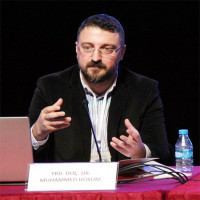
Editorial Board

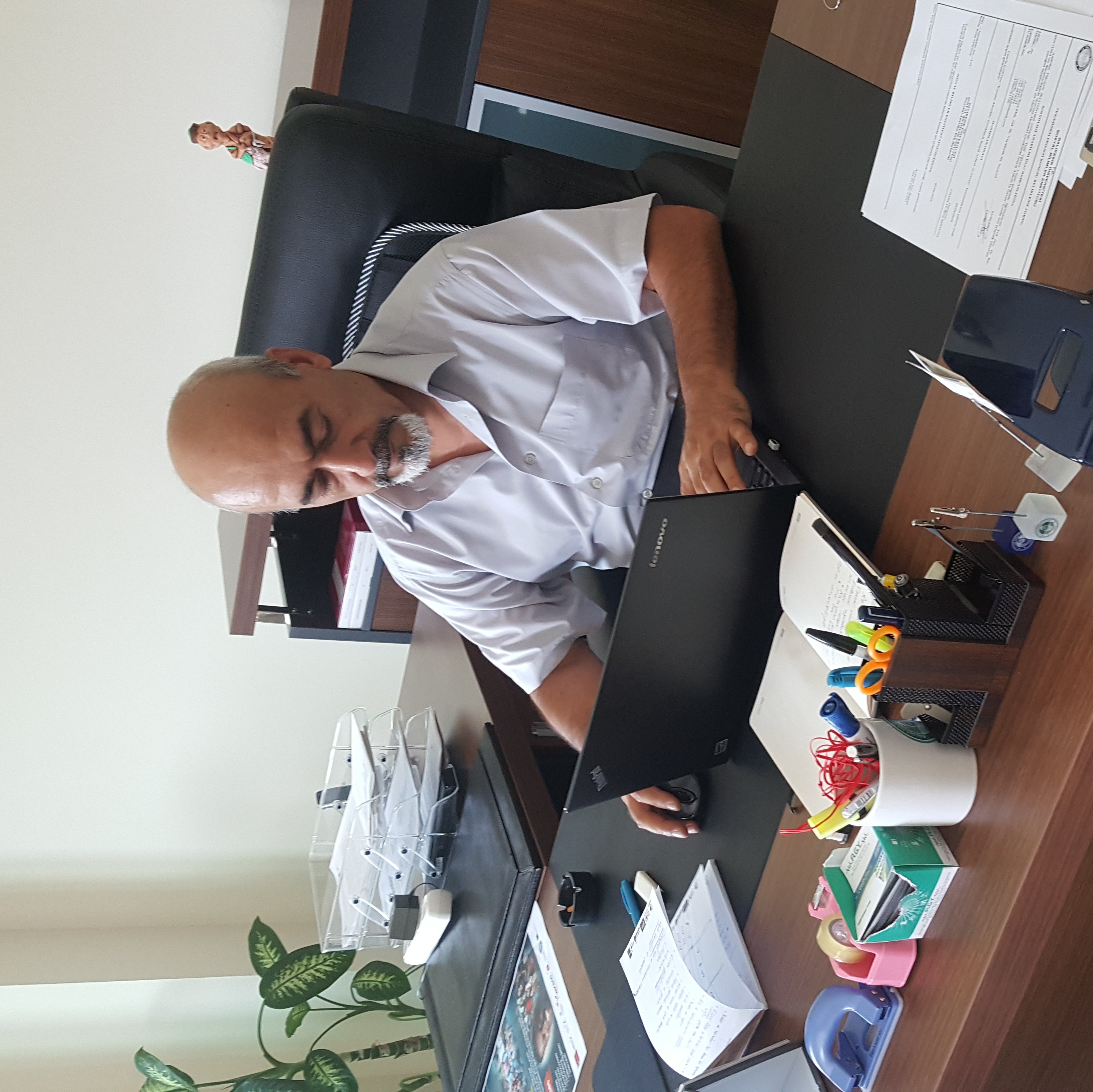



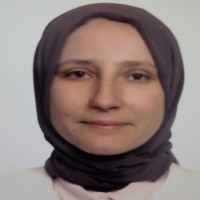

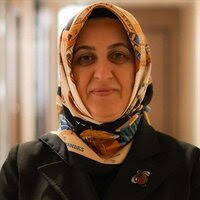



Section Editor (Social Work)

Section Editor (Turkish Language and Literature)



Section Editor (Translation Studies)
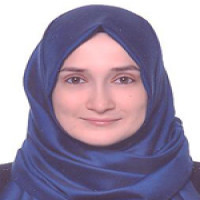

Section Editor (Educational Sciences)




 Web
Web
Section Editor (German Language and Literature)

Section Editor (Psychology)
Section Editor (History of Art)

Section Editor (Sociology)

Section Editor (International Relations)

Section Editor (Hindology)

Section Editor (Russian Language and Literature, Migration Studies)
Section Editor (Chinese Language and Literature, Sinology, Women's Studies)
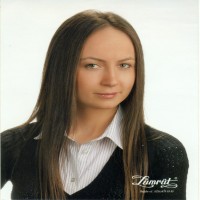
Section Editor (History of Science)
Literary Review Board

Turkish Language Editor

Foreign Language Responsible

Layout Editor



Secretariat

Journal Owner

The published articles in JSCR are licensed under a Creative Commons Attribution-NonCommercial 4.0 International License. JSCR complies with the Open Access Policy for the sharing of knowledge.








